The Nordic Cluster
The Swedish system is best understood not in terms of socialism, but in terms of Rousseau, he continued: Rousseau was an extreme egalitarian and he really hated any kind of dependence --depending on other people destroyed your integrity, your authenticity-- therefore the ideal situation was one where every citizen was an atom separated from all the other atoms...
Michael Booth, The Almost Nearly Perfect People: Behind the Myth of the Scandinavian Utopia
Our series on Culture Clusters continues with the Nordic Cluster, that, according to the Globe Study on Global Leadership, includes Denmark, Finland, and Sweden (*given the many similar cultural traits shared by the Nordic countries I did, however, expand the list to also include Norway and Iceland).
One of the peculiarities of this cluster is that the Nordic societies score, simultaneously, high and low on the cultural dimension known as Collectivism (low scores on In-Group Collectivism classifies these societies as Individualistic according to Hofstede’s framework):
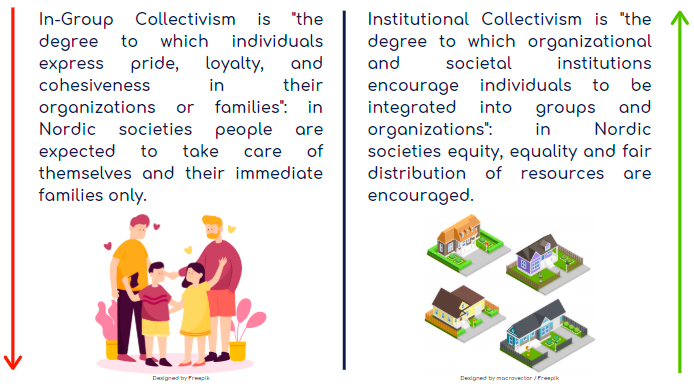
Nordic societies value social harmony equality and strive to achieve collective well-being through equal distribution of resources, but at the same time they also value personal independence and self-reliance:
people are responsible for themselves and their immediate family only, focus is on individual priorities, freedom and self-realization.
To better understand the group dynamics and the high egalitarianism typical of Nordic countries, we must get acquainted with a concept known as Janteloven (or the Law of Jante), a social code specific to the Nordic region - formulated by the Dano-Norwegian author Aksel Sandemose - that identifies attempts at standing out from the crowd and personal ambition as inappropriate and reproachable (in the novel “A Fugitive Crosses His Tracks”, Sandemose tells the story of Jante, a fictional Danish town whose inhabitants are expected to subsume their identity to the group):
- You’re not to think you are anything special.
- You’re not to think you are as good as we are.
- You’re not to think you are smarter than we are.
- You’re not to convince yourself that you are better than we are.
- You’re not to think you know more than we do.
- You’re not to think you are more important than we are.
- You’re not to think you are good at anything.
- You’re not to laugh at us.
- You’re not to think anyone cares about you.
- You’re not to think you can teach us anything.
Collectivist group behaviour aside, the implications of Janteloven in this cluster are also reflected in its extremely low scores on Power Distance (“the extent to which societies and organizations accept power inequality among their members”) and in its “Feminine” orientation (note: while Nordic societies score extremely high on Gender Egalitarianism, according to Hofstede's framework the main difference between "Feminine"/Tender and "Masculine"/Tough cultures is concerned with intrinsic motivation: live to work, strive to excel and to be the best -M-, vs work to live and enjoy what you do -F-).
In equality-driven feminine societies,
- gender roles are not clearly defined and there's little or no gap between perceived "male" and "female" values;
- conflict is resolved by compromise and negotiation rather than by open confrontation;
- individuals of both genders tend to be more cooperative than competitive;
- “weak" members of the society are treated with empathy and supported by the collectivity;
- people tend to be modest and unassuming, self-promotion is frowned upon (a point reinforced by Carlsberg’s clever and ironic tagline):
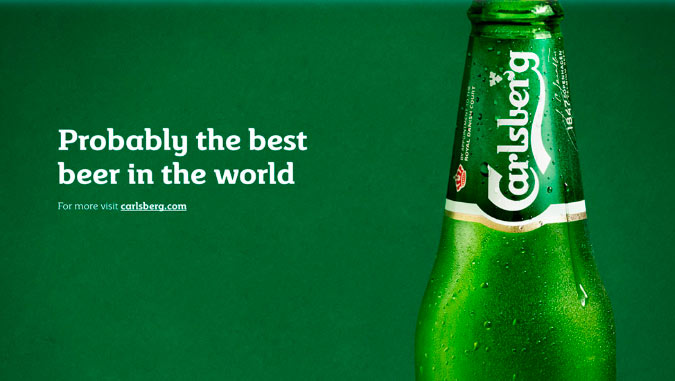
(Image from: https://www.cssdesignawards.com/sites/it-all-comes-from-beer/31244/)
Perhaps unsurprisingly, in the Nordic cluster people tend to value leaders who are charismatic (inspirational/visionary/decisive), team-oriented, and participative, while the score for Self-Protective leadership (the self-conscious style that focuses on “face-saving”, on the safety and protection of the leader) is the lowest for all clusters.
But what do people in the Nordic cluster aim for? With regard to societal values (“indicating a society’s belief as to what should be” as per Globe’s definition), people express a desire for more In Group Collectivism and less Institutional Collectivism, more Gender Egalitarianism and a lower level of Power Distance (a summary of Cultural Practices and Values in the Nordic Europe Group can be found here).
***
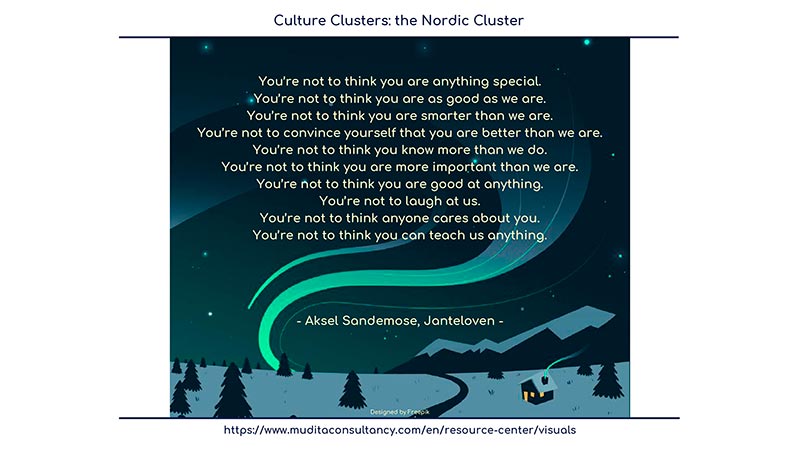
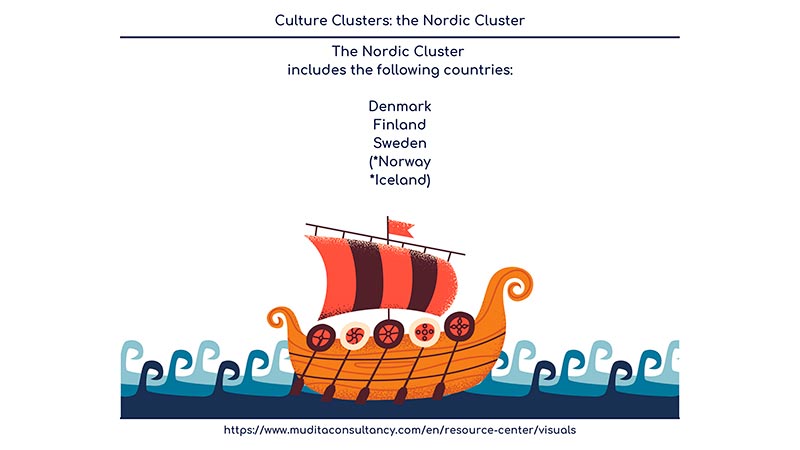
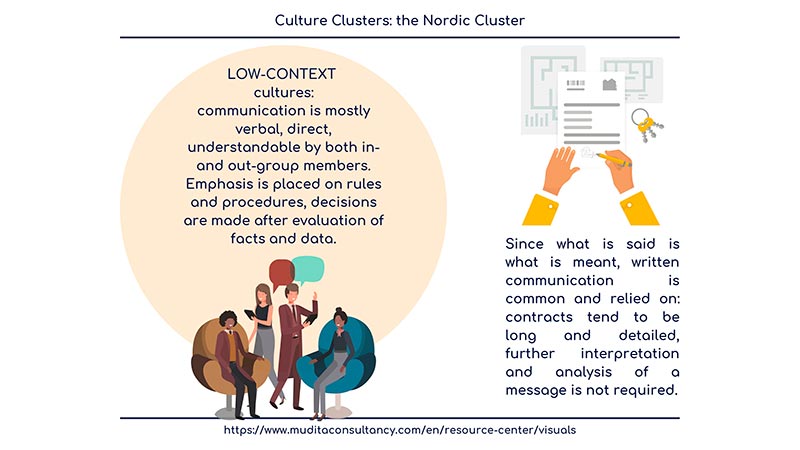
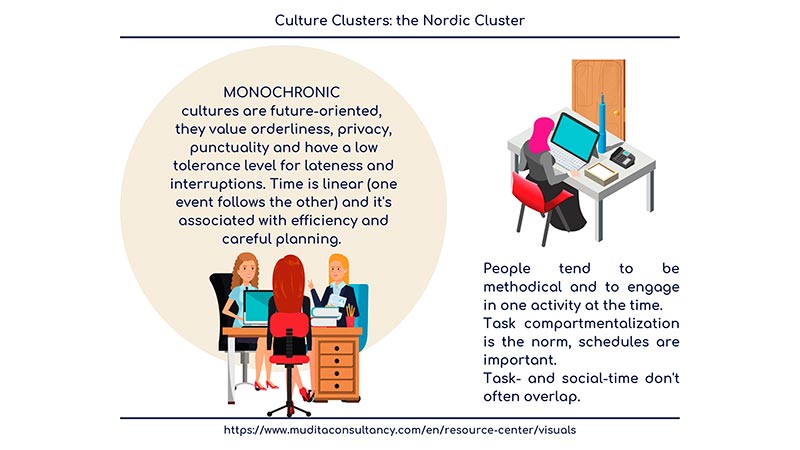
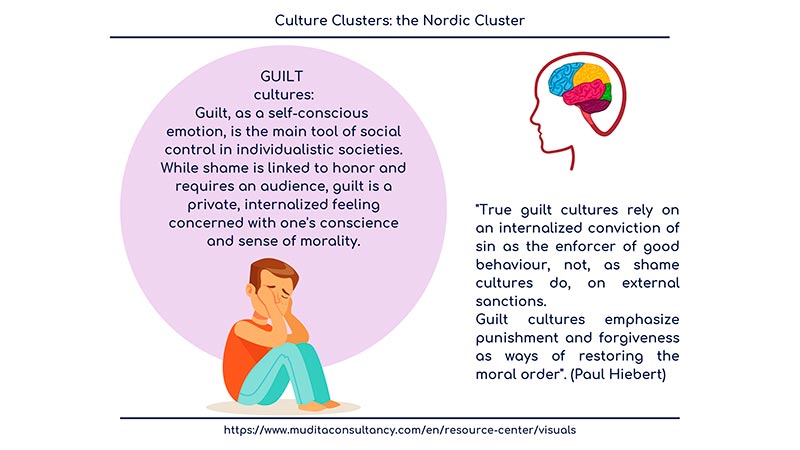
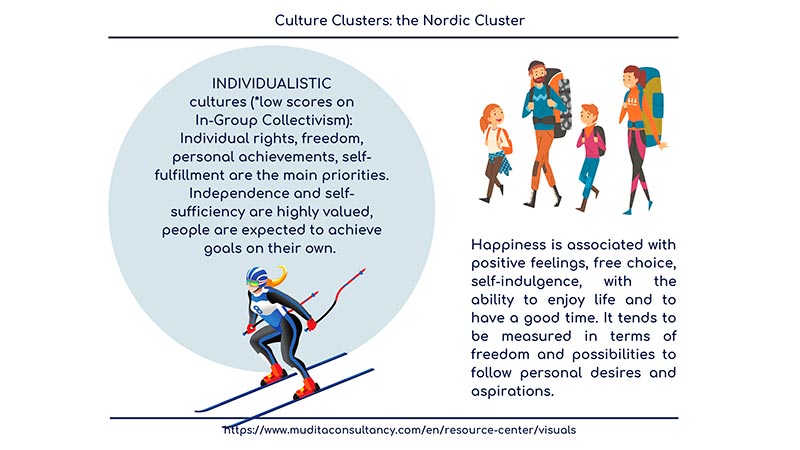
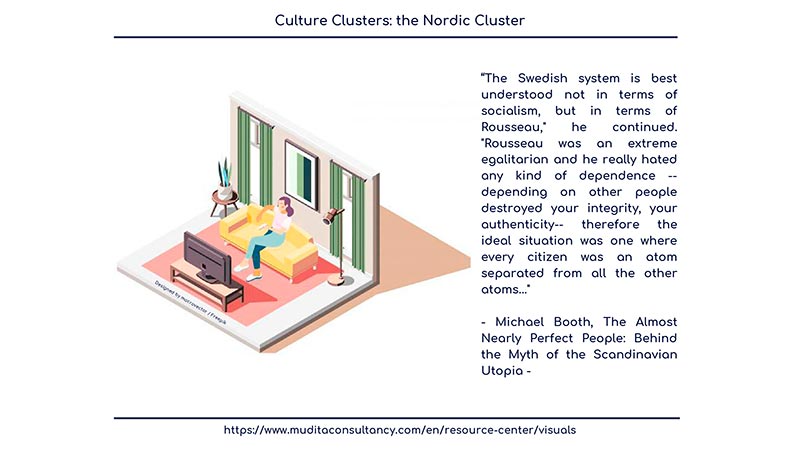
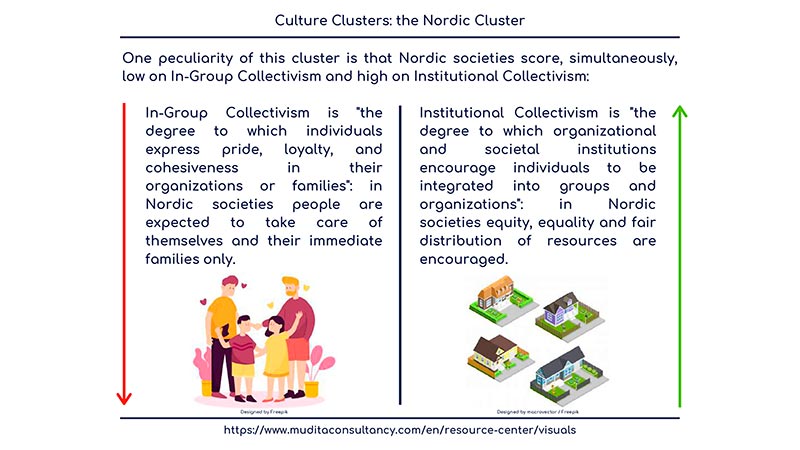
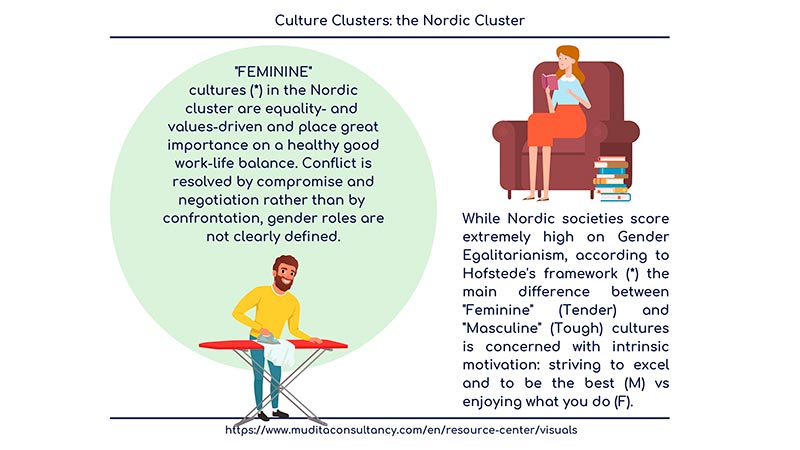
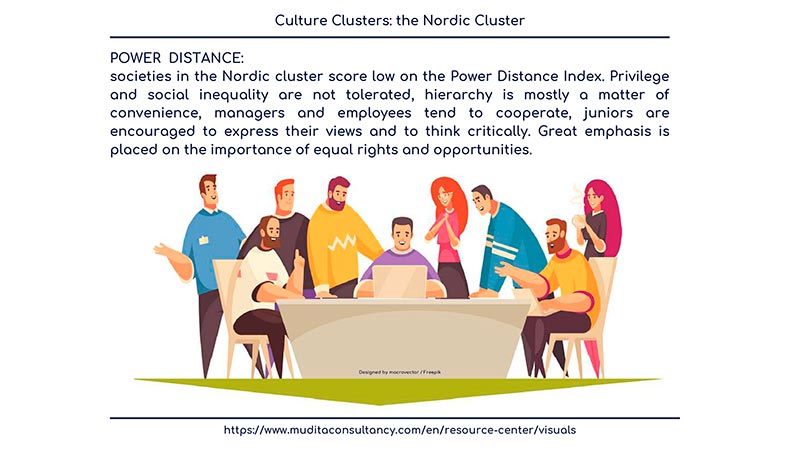
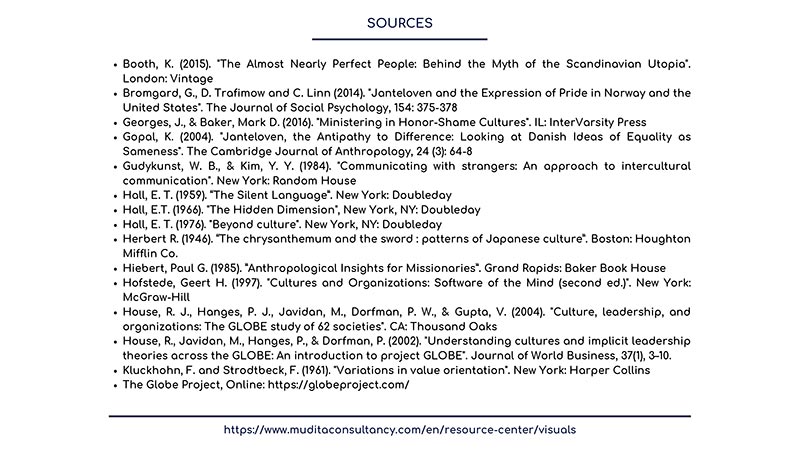
Related posts:
- The Sub-Saharan Africa Cluster
- The Middle East Cluster
- The Latin Europe Cluster
- The Germanic Europe Cluster
- The Eastern Europe Cluster
- The Southern Asia Cluster
- The Latin America Cluster
- The Confucian-Asia Cluster
- The Anglo Cluster
***
SOURCES:
- House, R. J., Hanges, P. J., Javidan, M., Dorfman, P. W., & Gupta, V. (2004). "Culture, leadership, and organizations: The GLOBE study of 62 societies". CA: Thousand Oaks
- Hall, E. T. (1959). “The Silent Language”. New York: Doubleday
- Hall, E.T. (1966). "The Hidden Dimension". New York: Doubleday
- Hall, E. T. (1976). "Beyond culture". New York, NY: Doubleday
- The Globe Project, Online: https://globeproject.com/
- Hofstede, Geert H. (1997). "Cultures and Organizations: Software of the Mind". New York: McGraw-Hill
- Herbert R. (1946). “The chrysanthemum and the sword: patterns of Japanese culture”. Boston : Houghton Mifflin Co.
- Kluckhohn, F. and Strodtbeck, F. (1961). "Variations in value orientation". New York: Harper Collins
- Gudykunst, W. B., & Kim, Y. Y. (1984). "Communicating with strangers: An approach to intercultural communication". New York: Random House
- Hiebert, Paul G. (1985). ”Anthropological Insights for Missionaries”. Grand Rapids: Baker Book House
- Booth, K. (2015). "The Almost Nearly Perfect People: Behind the Myth of the Scandinavian Utopia". London: Vintage
- Bromgard, G., D. Trafimow and C. Linn (2014). "Janteloven and the Expression of Pride in Norway and the United States". The Journal of Social Psychology, 154: 375-378
- Georges, J., & Baker, Mark D. (2016). "Ministering in Honor-Shame Cultures". IL: InterVarsity Press
- Gopal, K. (2004). "Janteloven, the Antipathy to Difference: Looking at Danish Ideas of Equality as Sameness". The Cambridge Journal of Anthropology, 24 (3): 64-8
Disclosure: This post contains affiliate links. If you decided to buy any of the products listed here, I would earn a small commission (at no additional cost to you).

